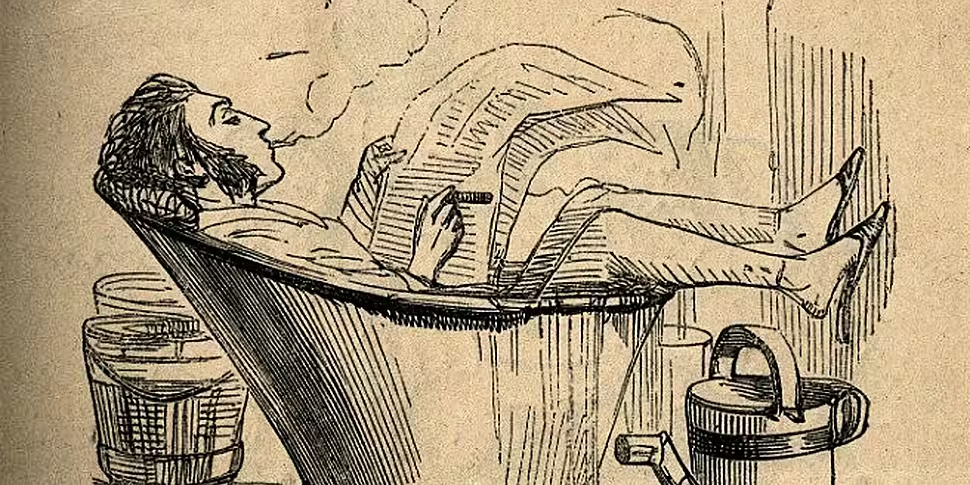Though the dominant image of the First World War is of shivering soldiers in muddy trenches fighting across barren, shell marked landscapes this doesn’t capture the complexity of the conflict. In 1918 the stalemate on the Western Front came to an end and a far bloodier chapter began.
When Europe went to war in 1914 it was with the echoes of the Napoleonic Wars ringing in their ears. Soldiers met each other across open fields as generals prepared for great campaigns and pitched battles; French soldiers even sported the brilliant blues and reds of La Grande Armée. These opening exchanges were incredibly costly as outdated tactics met the huge advances in military technology and soldiers fell to rapid rifle and machine gun fire. In response the armies began digging trenches, sheltering in the ground while the enthusiasm for war was left to wither on the battlefield.
This began a prolonged period of responsive adaptation as the Germans, French, and British Armies sought to break the deadlock along the Western Front. Miners tunnelled toward each other to lay massive mines while scientists and engineers worked on bizzare and effective projects at home. In 1915 the Germans launched the first large scale gas at Ypres, creating a hole in the British lines so vast their army was unable to secure it, yet a few months later damp cloths and gas masks massively reduced the weapon’s effectiveness. Even the mighty tank proved unable to massively tip the scales in favour of either side, though its influence would increase as the war dragged on.
This scene of innovation and response was repeated numerous times across the Western Front, yet the end to the Great War never seemed to grow any closer. That was until the United States’ declaration of war in 1917. This change in the balance of power precipitated the bloody German Spring offensive of 1918.
The Western stalemate stood largely in Germany’s favour. Though Germany did launch a number of offensives, most notably against the fortress of Verdun, their firm foothold in Belgium and France meant the pressure was on the Allies to expel the Germans from their trenches and not vice-versa. This all changed with the US entry into the war in 1917.
There was little doubt about the outcome of the war as American troops and armaments began to make their way across the Atlantic; defeat for Germany was now a matter of when, not if. The only chance left to Germany was to defeat the Allies before the US forces could be brought to bear.
Ideally, from a German perspective, the Russian appetite for war had waned by 1917. Though peace wouldn’t be finalised until March of the following year, Germany could largely count her eastern borders secured with Lenin’s ascension to power on the promise of peace, land, and bread as well as the aid of an armed coup. This allowed German High Command to begin planning for a huge offensive in the spring.
This push would prove wholly different from earlier efforts by all sides, thanks largely to the grizzled veterans of the Eastern Front.
While those in the west enjoyed the shelter afforded by extensive trench networks and defensive works, the soldiers in the east had no such protection thanks to the sheer size of the theatre they fought in. The resulting fluid battle lines forced the German armies in the east to fight a more mobile and violent war than their entrenched peers.
The arrival of these troops also allowed the Germans to withdraw troops from the front for training as stormtroopers. The concept was a relatively simple one; use well equipped and highly trained assault troops to attack vulnerabilities in the enemy lines, then send regular infantry to secure these gains while the assault troops move on to the next trench.
Though developed early in the war by both sides, these tactics had never been properly implemented on the Western Front; thanks largely to the pressing need for bodies to hold the line. By 1918, however, technical and tactical advances, coupled with the availability of men, meant that Germany was finally able to properly employ these stormtrooper tactics. It was these tactics, and the sheer weight of numbers, that would finally break the Allied lines.
On the 21st of March 1918 the Germans launched what would be their last major offensive with the largest bombardment of the war. In the space of five hours the Germans launched 3,500,000 shells at the Allied lines. As Winston Churchill himself described it: “exactly as a pianist runs his hands across the keyboard from treble to bass, there rose in less than one minute the most tremendous cannonade I shall ever hear...It swept round us in a wide curve of red leaping flame...quite unending in either direction.”
Sheltered behind a creeping curtain of shells and poison gas the German stormtroopers advanced across no-mans-land before falling on the British positions near St Quentin. Despite the ferocity of the bombardment and the tenacity of the German troops many of the British positions held for the first few days.
By the 24th of March, however, the line had become incredibly fractured and the fighting took on the mobile elements that had dominated the Eastern Front. This allowed the Germans to push towards their main goals; the transport hubs at Amiens and Arras.
Retreating across the Somme’s shell-scared landscape, that had taken so many deaths to secure, the Allies fought to delay the German advance for two bloody weeks. At Villers-Bretonneux the fighting finally paid off as the German advance ground to a halt. Exhausted and overstretched the German soldiers were simply unable to press further.
Though they had captured 3,100 km2 of enemy territory the Spring Offensive was ultimately a failure and spelled the end for Germany. The two weeks of fighting had seen both the Germans and Allies lose around 250,000 men each. These were numbers that the Germans simply could not replace, meanwhile US troops flooded into Europe to bolster the Allied forces.
Worse still for Germany was the fact that so many of the dead and wounded were hardened veterans of the Eastern Front. When the eventual counterpunch landed in August of 1918 it landed on a demoralised German force. The trenches were again abandoned as the fighting broke out into the European countryside and the casualties soared again.
The war dragged on for three more bloody months before the inevitable German surrender arrived. Though 1918 would be the year that finally brought peace, it was also one of the bloodiest and the open and aggressive stormtrooper tactics that marked it out would again be felt across Europe 20 years later.
Join Patrick this Saturday at 7pm on Newstalk as Talking History explores the battlefields of the First World War.









